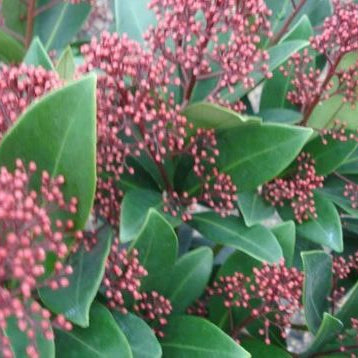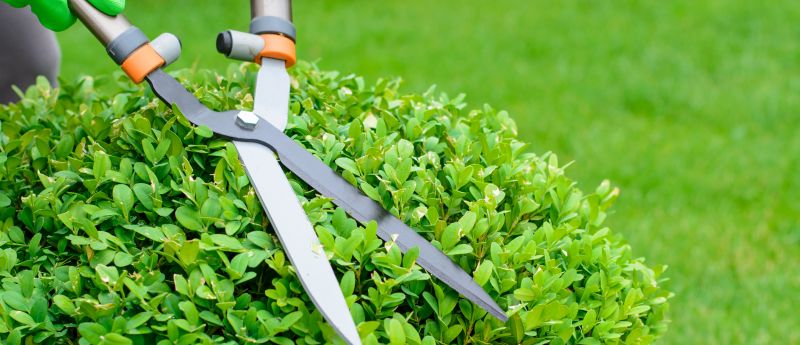
Free Delivery £400+*
Hedging, Tree, Shrubs & more
Free Delivery £400+*


A beautifully trimmed hedge can transform your garden into an outdoor oasis. The art of hedge trimming is a mix of technique, timing and a little bit of creativity. In this comprehensive guide, we will delve into the world of hedge trimming, from the basic steps for beginners to advanced hedge trimming styles and the essential tools you need. We'll also discuss when to trim your hedges, the do's and don'ts of hedge trimming and provide specialised tips for different hedge types.

Even if you're a complete beginner, you can achieve a beautifully manicured garden. Here's a step-by-step guide to get you started:

The United Kingdom's climate can be a bit temperamental, making it essential to time your hedge trimming just right. The best time for hedge trimming in the UK typically falls into two categories:
Late Winter/Early Spring (February to March): This is an ideal time to trim deciduous hedges, such as Beech, Hawthorn or Hornbeam. This avoids nesting birds, and it is when the worst of the winter weather has passed.
Late Summer/Autumn (August to September): For evergreen hedges like Yew, Buxus (Box) or Laurel, late summer to early autumn is perfect. It gives your hedge a tidy look before the colder months while avoiding bird nesting season.

The frequency of hedge trimming depends on the type of hedging plant you have. Here are some guidelines:
Fast-Growing Hedges: Hedges like Leylandii can be incredibly vigorous. They may need trimming two to three times per year to maintain shape and size.
Slower-Growing Hedges: Deciduous hedges, like Beech, may only require one trim each year. They grow at a more manageable pace.
Evergreen Hedges: These hedges often need one trim per year, usually in late summer or early autumn.

The best weather for hedge trimming is when it's dry and slightly overcast. Avoid trimming in strong winds or extreme heat, as this can stress your hedge and lead to poor results. It's also advisable to avoid trimming during frosty conditions, as this can damage your hedge.

Trimming hedges can be straightforward when you follow these do's and avoid the don'ts:
Do:
Don't:

Achieving a perfectly straight hedge requires precision and patience. Here's a step-by-step guide to help you achieve a flawless straight hedge cutting:
1. Use a Guide: To create a straight line, set up a taut string or a garden line along the top of the hedge as a guide.
2. Start from the Bottom: Begin trimming from the base of your hedge and work your way up. Always follow the guide string.
3. Maintain the Slope: As mentioned earlier, it's essential to maintain a slight slope for even sunlight distribution.
4. Regularly Check Your Progress: Pause occasionally to step back and assess your work. This will help you ensure you're maintaining a straight line.
Tall hedges can be difficult and unsafe to handle yourself and may require specialist guidance.

Different hedges have unique requirements when it comes to trimming. Let's explore some specialised tips for different hedge types:
Evergreen Hedges: Evergreen hedges like Yew and Buxus (Box) are relatively low maintenance. Keep them neat by trimming them during late summer or early autumn.
Deciduous Hedges: Deciduous hedges such as Beech, or Hornbeam require a different approach. Trimming during late winter (February to March) is ideal.
Flowering Hedges: Hedges that produce flowers, like Lavander or Hydrangea shrubs, should be pruned right after flowering. This encourages healthy growth for the next season.
The type of hedge is a critical factor in determining the best time to trim, how often, and the techniques to use. Here's a quick summary:
Evergreen Hedges: Trim in late summer to early autumn. Shape as needed.
Deciduous Hedges: Trim in late winter to encourage new growth. Focus on maintaining shape.
Flowering Hedges: Prune right after flowering to maintain health and appearance.

Hedge trimming offers you the chance to explore various styles and designs to suit your garden's aesthetics. Here are some popular hedge trimming styles:
Box or Square Shape: Achieve a formal, neat appearance with a squared-off hedge.
Cloud or Bonsai Style: Create intricate, cloud-like shapes or intricate bonsai designs.
Advanced Topiary: Craft ornate animal or geometric shapes for a striking focal point.
Each style requires different levels of expertise and maintenance, so choose one that aligns with your gardening skills and patience.
For hedge pruning, you'll need the right tools in your arsenal. Here's a handy list of essential hedge-trimming tools:
Don't forget that maintaining and cleaning your tools is equally important to ensure they stay in good working condition.
Whether you're a novice or an experienced gardener, these tips and insights will help you achieve the lush and healthy hedge you've always dreamed of. With over 35+ years of experience of horticultural experience, let us help you maintain a beautiful outdoor space. Enjoy complimentary delivery on all orders exceeding £400. Have questions or need guidance? Reach out to us on 01565 722766; we’re here to help!
Cherry laurels are a very popular hedge as they are evergreen and can grow upto the 3 feet a year. Laurels have large, glossy green leaves, very sm...
View full detailsPrunus Lusitanica - Portuguese Laurel are fantastic laurels that are a great alternative to the classic cherry Laurel. They are more formal in app...
View full detailsBrenelia is a very hardy form of portuguese laurel that also grows a little faster, in a very tidy manner with much redder stems. More graceful in...
View full detailsClassic laurel hedging. It's the country's favourite hedging shrub. Lovely luxurious evergreen dark green leaves. Grows easily in all soils except ...
View full detailsThe posh form of laurel hedging. They cost a little more than common laurel but they are more graceful in appearance with purple shoots and finer l...
View full detailsPrunus lusitanica Angustifolia - Portuguese Laurel are fantastic laurels that are a great alternative to the classic cherry Laurel. They are more f...
View full detailsClassic laurel hedging. It's the country's favourite hedging shrub. Lovely luxurious evergreen bright green leaves. Grows easily in all soils excep...
View full detailsPrunus lusitanica Angustifolia - Portuguese Laurel are fantastic laurels that are a great alternative to the classic cherry Laurel. They are more f...
View full detailsPrunus lusitanica Angustifolia - Portuguese Laurel are fantastic laurels that are a great alternative to the classic cherry Laurel. They are more f...
View full details